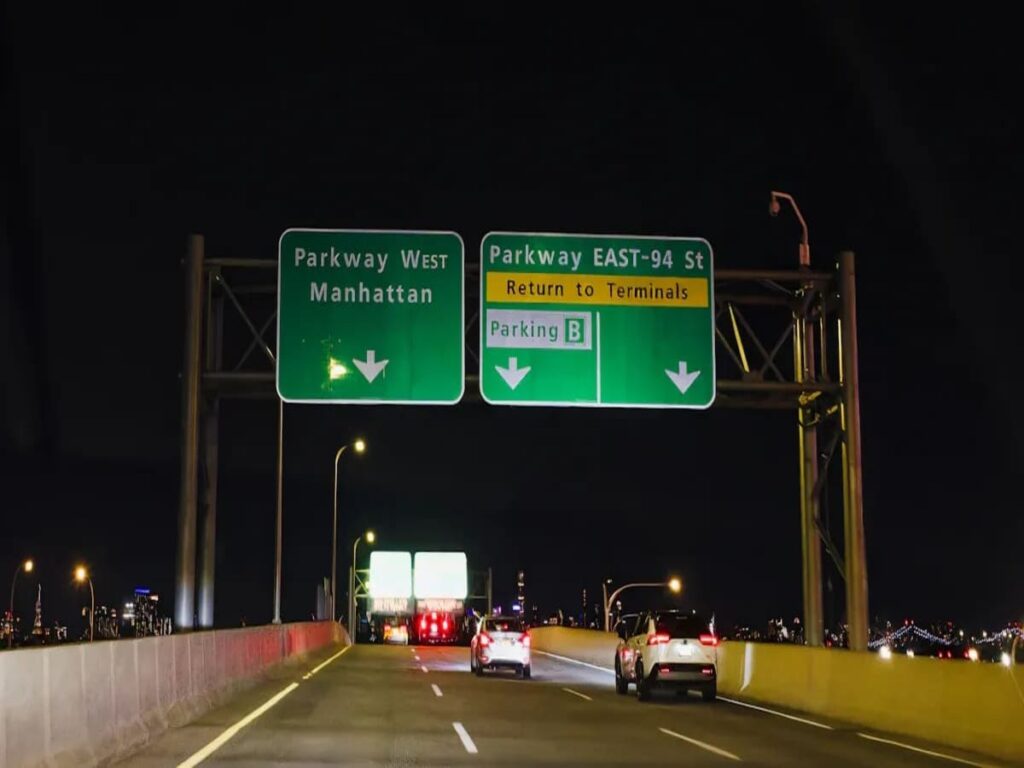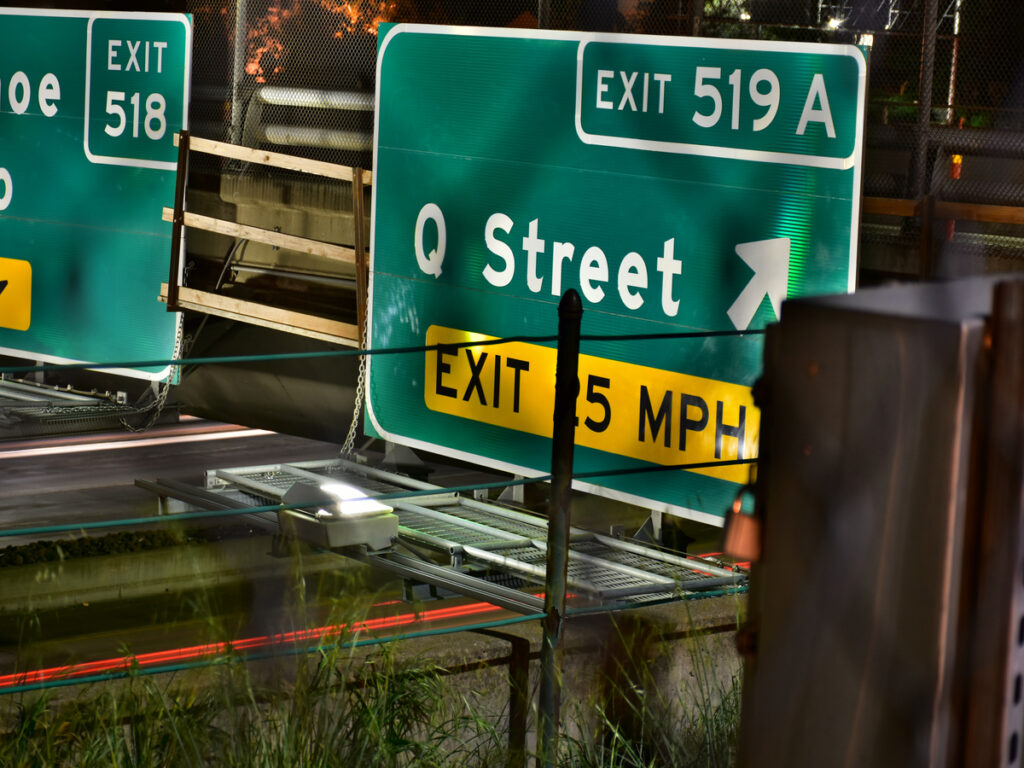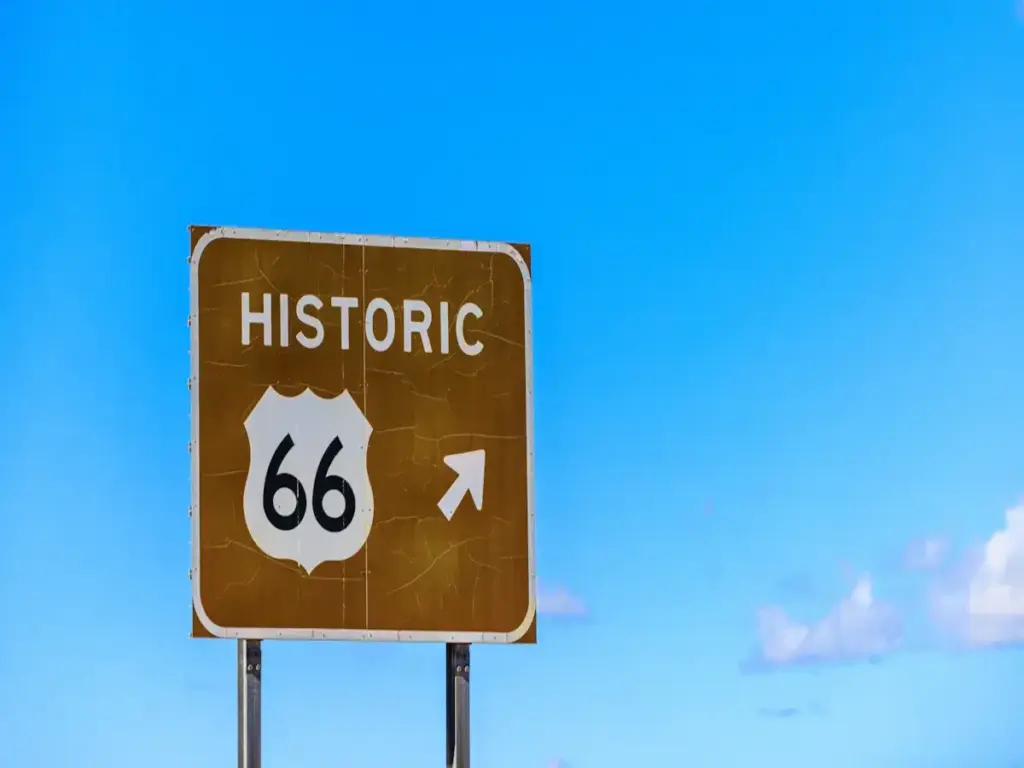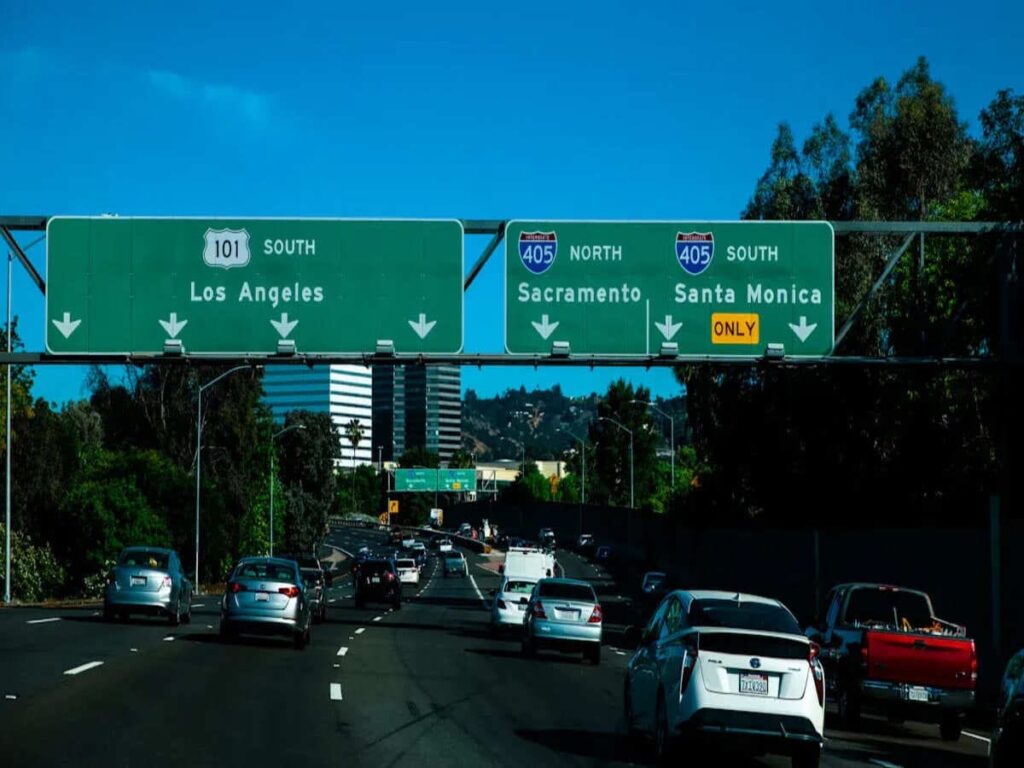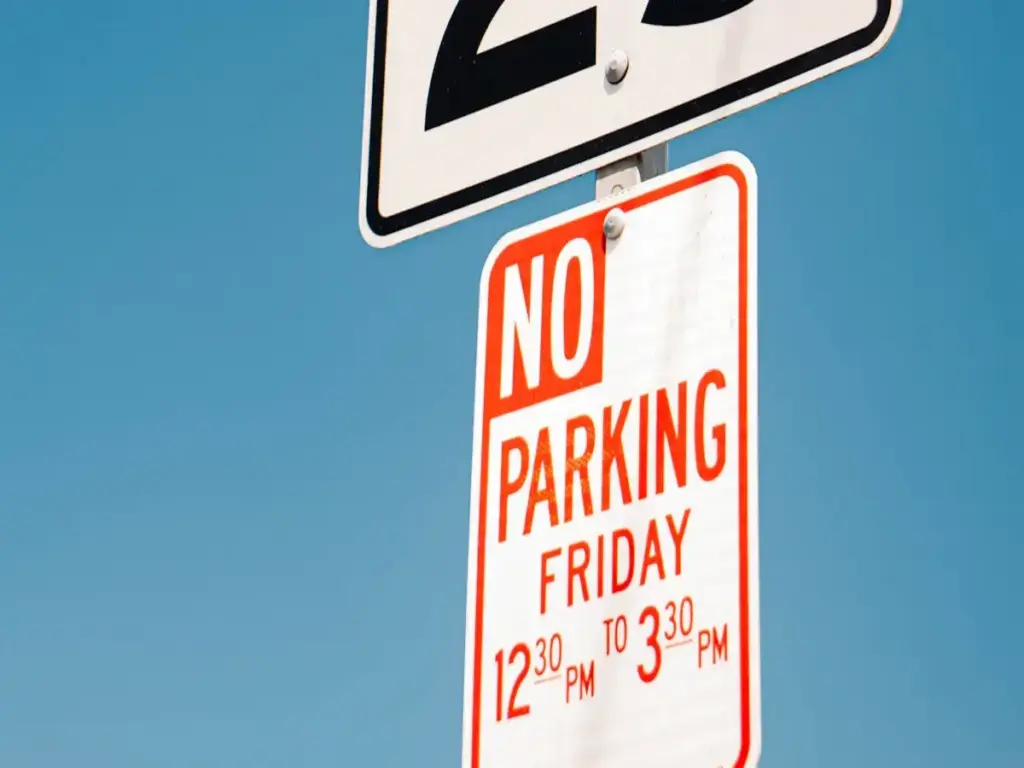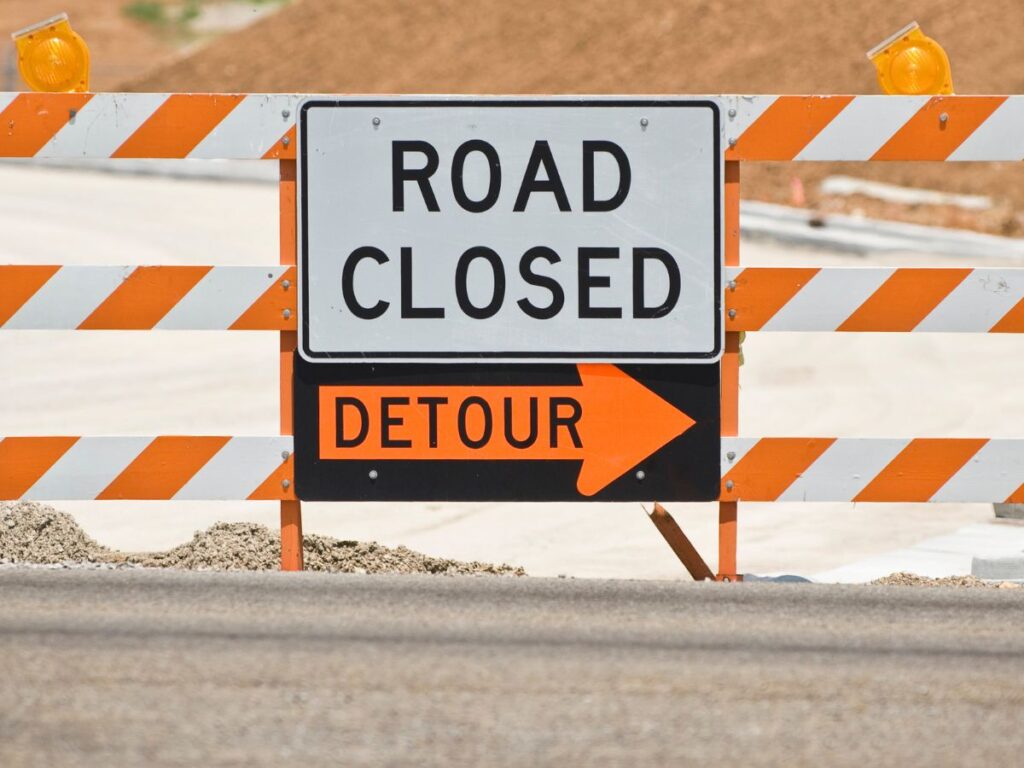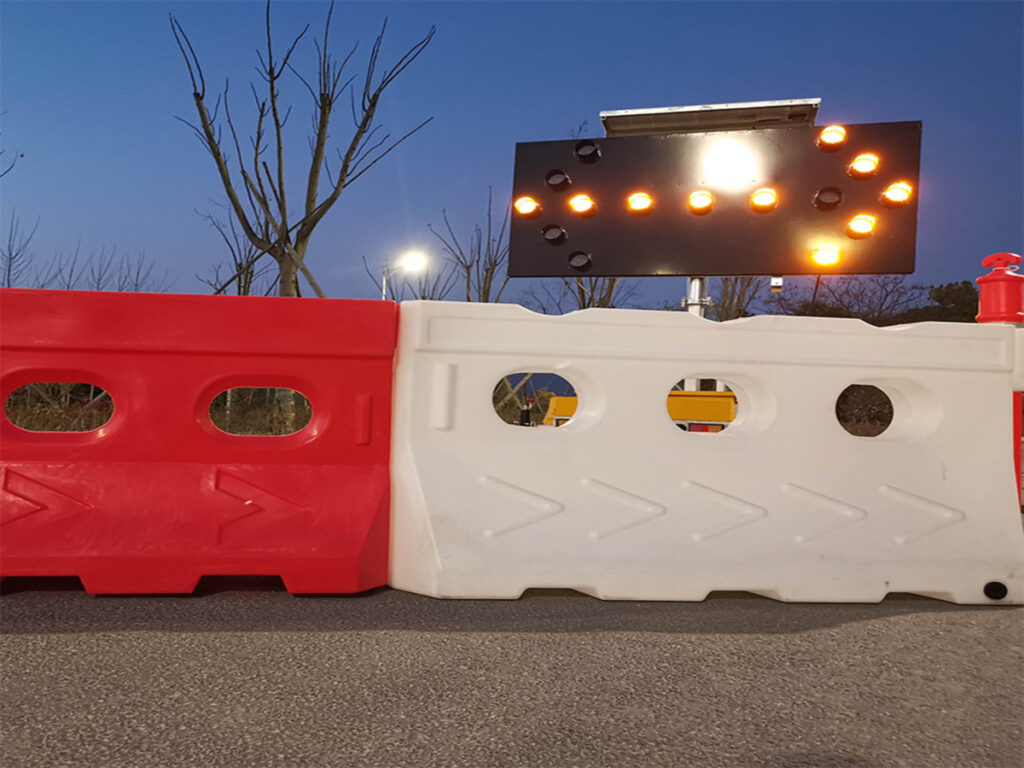
Le barriere rosse e bianche piene d'acqua sono facili da vedere. Forniscono forti segnali di allarme per la sicurezza stradale. Le norme di sicurezza del Regno Unito dicono che questi colori sono importanti. Aiutano a segnalare i pericoli e a gestire i luoghi degli incidenti. Le barriere arancioni brillanti sono ancora molto utilizzate. Ma le barriere rosse e bianche danno segnali chiari agli automobilisti. Gli automobilisti associano questi colori al pericolo. Questo mix di colori aiuta ogni barriera a farsi notare rapidamente. Aiuta a guidare il traffico e mantiene al sicuro conducenti e lavoratori. Questi colori influenzano anche il modo in cui le persone pensano. Questo li rende sicuri e utili. Ecco perché sono affidabili per l'uso su strada.
OPTRAFFIC offers high-visibility red and white water-filled barriers designed to improve road safety and enhance driver awareness. Nostro barriere del traffico are built to meet safety standards, ensuring maximum protection for workers and motorists. Explore our range of reliable traffic safety solutions today.
Water-Filled Barriers Overview
Design and Function
Barriere piene d'acqua are made from HDPE plastic. This plastic is strong and lasts a long time. It does not break easily in bad weather. Some barriers use special plastics or recycled materials. Questo aiuta l'ambiente. Makers often add UV protection. This stops the colours from fading in the sun.
Le caratteristiche del design chiave includono:
- Bright colours and reflective strips help people see them well.
- The barriers can connect together for different shapes and sizes.
- Sono leggeri quando sono vuoti, quindi spostarli è facile.
- Quando riempito con acqua, they stay in place and absorb hits.
- Fill and drain holes are hard to mess with, mantenendo l'acqua sicura all'interno.
- Le cerniere lasciano piegare le barriere, che è buono per le strade curve.
- I fori permettono di fissare la barriera al suolo.
- I fori per carrelli elevatori e pallet li rendono facili da sollevare e spostare.
Le barriere piene d'acqua sono veloci da installare. I lavoratori non hanno bisogno di gru o di grandi macchinari. Ciò significa meno traffico nelle aree di lavoro. Se un'auto li investe, sono più sicuri delle barriere di cemento.
Nota: Alcune nuove barriere sono dotate di tecnologia intelligente. Usano sensori per verificare la sicurezza da lontano. Ciò rende le strade ancora più sicure.
Usi comuni
Le barriere riempite d'acqua vengono utilizzate in molti luoghi per proteggere le persone. I loro colori vivaci e la forma li rendono facili da individuare. Vanno bene per molti lavori:
- Cantieri: Mantieni i lavoratori al sicuro e mostra alle auto dove andare.
- Gestione del traffico: Guidare le auto attraverso zone di lavoro o strade chiuse.
- Eventi speciali: Aiuta a controllare la folla ai concerti o alle sfilate.
- Luoghi degli incidenti: Make safe areas for emergency workers and stop more accidents.
- Highway projects: Help manage lots of cars on big roads.
These traffic barriers are strong and easy to use. They are a top choice for keeping roads safe when things change quickly.
Colour and Visibility

Red for Warning
Red is a strong warning colour for road safety. When drivers see red, sanno di stare attenti. This colour means danger and makes people pay attention. Water-filled barriers use red to warn drivers about changes ahead. Red helps people notice the barriers quickly. Questo riduce la possibilità di incidenti. Many experts pick red because it stands out. It is easy to see in the day and at night. Red barriers show where there are dangers or where workers need to be safe.
Suggerimento per la sicurezza: Put red barriers at the start of danger zones to warn drivers early.
Red also helps emergency teams at accident sites. Il colore fa sì che i conducenti rallentino e guardino. Ciò aiuta gli operatori di emergenza a svolgere il proprio lavoro in modo sicuro e rapido.
Bianco per contrasto
Il bianco risalta accanto al rosso, quindi le barriere di sicurezza sono più facili da vedere. Quando il rosso e il bianco sono insieme, gli automobilisti li notano da molto lontano. Il bianco fa rimbalzare la luce, quindi è chiaro nella nebbia, piovere, o di notte. Ciò rende la barriera facile da vedere e seguire.
- Linee bianche o pannelli sulle barriere aiutano a guidare le auto attraverso le aree di lavoro.
- Il rosso e il bianco insieme formano uno schema che significa avvertimento e cautela.
Il bianco aiuta a mantenere le barriere facili da vedere in qualsiasi condizione atmosferica. Impedisce alla barriera di confondersi con lo sfondo. L'uso del bianco garantisce che la barriera funzioni sempre bene.
Perché il rosso e il bianco funzionano
Impatto psicologico
Il rosso e il bianco insieme danno un segnale forte agli automobilisti. Il rosso è il colore più brillante che le persone vedono. Attira l'attenzione e significa pericolo o qualcosa di urgente. When drivers see red, rallentano o si fermano. Le persone imparano questa reazione, ma sembra anche naturale. Studi di Donald (1988) e Edworthy e Adams (1996) mostrare le luci rosse fa sentire le persone avvisate. Kahnemann (1973) i segnali rossi rilevati inducono i conducenti ad agire con maggiore attenzione.
- Il rosso ha la lunghezza d'onda più lunga, quindi si presenta nella nebbia o nella polvere.
- Il colore rosso ricorda alle persone ferite e sangue, rendendolo più serio.
- Il bianco risalta accanto al rosso, quindi i segni sono facili da vedere.
- I primi segnali ferroviari usavano il rosso per “stop”.’ e bianco per "vai", ma questo creava confusione di notte. Ciò dimostra perché i segnali di sicurezza necessitano di colori chiari.
Nota: L'utilizzo sia del rosso che del bianco fornisce ai conducenti un chiaro avvertimento. Questo aiuta a impedire agli incidenti di accadere.
Visibilità diurna e notturna
Le barriere rosse e bianche piene d'acqua sono facili da vedere in qualsiasi momento. I loro colori vivaci e le strisce lucide aiutano le persone a individuarli durante il giorno. Di notte, speciali teli rimandano le luci dell'auto ai conducenti. Ciò mantiene le barriere facilmente visibili da lontano. Regole di sicurezza come OSHA E MUTCD dicono che questi colori sono i migliori per avvisare i guidatori e segnalare i punti pericolosi.
Molti prodotti, come la barriera d'acqua in stile Remcon Jersey, utilizzare colori vivaci e parti lucide per mantenere le persone al sicuro. Le barriere rosse e bianche sono più facili da vedere rispetto ad altri colori. Ciò aiuta a proteggere conducenti e lavoratori. Una buona visibilità aiuta il traffico a muoversi in sicurezza e segnala chiaramente il pericolo in ogni momento.
Vantaggi per la sicurezza stradale
Segnalazione del luogo dell'incidente
Le barriere rosse e bianche piene d'acqua aiutano a contrassegnare i luoghi degli incidenti. Le squadre di emergenza utilizzano queste barriere per creare un'area sicura. Gli automobilisti vedono i colori vivaci e sanno che devono rallentare. Sanno anche che potrebbe essere necessario girarsi o fermarsi. Ciò aiuta a prevenire più incidenti e a garantire la sicurezza di tutti.
Quando c'è un incidente, ogni secondo conta. Gli equipaggi possono erigere barriere piene d'acqua molto velocemente. Le barriere creano una linea netta tra l'incidente e il traffico. Questa linea aiuta gli automobilisti a sapere dove non andare. Inoltre, garantisce la sicurezza degli operatori di emergenza mentre aiutano le persone o spostano cose.
Mancia: Mettere le barriere in uno schema può aiutare a mantenere le persone al sicuro. Impedisce alle persone di mettersi in pericolo e mostra loro dove andare.
I colori rosso e bianco rendono le barriere stradali facili da vedere con qualsiasi tempo. Le strisce riflettenti aiutano i conducenti a vederli di notte. Queste cose aiutano a prevenire ulteriori incidenti e a mantenere l'area sicura.
Delineazione del pericolo
Le barriere piene d'acqua mostrano dove si trovano i pericoli stradali. La loro forma e colore li rendono facili da notare. Gli autisti li vedono e sanno che la strada è diversa o che c'è del lavoro da fare. Le barriere agiscono come una recinzione e impediscono alle persone di mettersi in pericolo. Ciò mantiene le auto e le persone lontane da luoghi non sicuri.
I produttori testano queste barriere di sicurezza stradale per assicurarsi che siano sicure. Le barriere possono subire un colpo e aiutare a prevenire gli infortuni se un'auto le colpisce. Ciò riduce la possibilità di ulteriori incidenti dopo un incidente. Pannelli verticali e strisce lucide aiutano a vedere le barriere in caso di maltempo o di notte.
- Le barriere piene d'acqua sono utili:
- Mostra il bordo dei lavori stradali
- Aiutare le auto ad andare nella direzione giusta
- Mantenere i lavoratori e le macchine al sicuro
Le barriere di sicurezza contribuiscono a rendere i luoghi pericolosi facili da individuare. Gli automobilisti ricevono chiari segnali di rallentare o svoltare. Le persone che camminano sono più sicure perché le barriere le tengono fuori pericolo. Queste cose rendono le barriere piene d'acqua una buona scelta per le strade trafficate.
Sicurezza nei cantieri
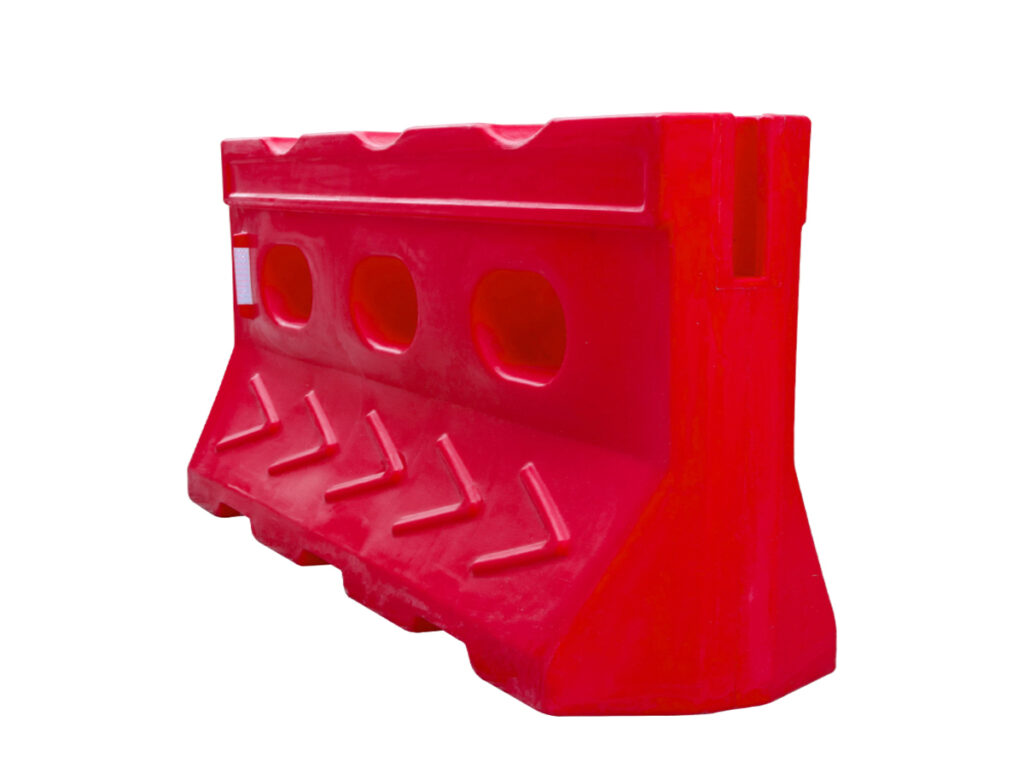
Controllo del traffico
Le barriere rosse e bianche piene d'acqua sono importanti per il controllo del traffico. I lavoratori utilizzano queste barriere per creare percorsi sicuri per auto e persone. I colori vivaci risaltano sulla strada, in modo che i conducenti vedano rapidamente i cambiamenti. Quando vuoto, le barriere sono leggere e facili da trasportare. Gli operai li mettono a posto prima di aggiungere l'acqua. L’acqua rende pesanti le barriere e le mantiene stabili. Non si muovono se un'auto li urta.
Le squadre spesso uniscono insieme molte barriere stradali. Ciò crea una linea forte sul bordo dell'area di lavoro. Le barriere impediscono alle auto di entrare in punti pericolosi. Proteggono inoltre i lavoratori dalle auto in movimento. Molti siti aggiungono pannelli in rete o recinzioni alle barriere. Questi aiutano a tenere le persone lontane da luoghi non sicuri. Le barriere possono anche contenere segnali per conducenti e pedoni.
Mancia: Posizionare le barriere mentre sono vuote, quindi riempire con acqua. Ciò aiuta i lavoratori a configurarsi più velocemente e a rimanere al sicuro.
Le barriere riempite d'acqua seguono rigide norme di sicurezza come i test OSHA e MASH TL-2. Il loro design aiuta ad assorbire i colpi meglio del cemento. Ciò riduce la possibilità di farsi male in un incidente. I colori rosso e bianco li rendono facili da vedere, anche quando è occupato o buio. Questo aiuta a fermare la confusione e mantiene il traffico in movimento.
Guida alla corsia
È importante guidare il traffico in sicurezza nei cantieri. Le barriere rosse e bianche piene d'acqua aiutano a liberare le corsie per le auto. I lavoratori installano le barriere in linee rette o curve. I colori vivaci e le strisce lucide aiutano i conducenti a vedere le corsie, Anche di notte o in caso di maltempo.
Su molti siti, le barriere hanno pannelli a rete. Questi consentono agli autisti e ai lavoratori di vedere attraverso la barriera. Ciò riduce i punti ciechi e aiuta tutti a rimanere vigili. Le barriere mostrano anche deviazioni e nuovi percorsi. Drivers follow the barriers to avoid danger and get where they need to go.
The traffic barriers also keep people walking safe. They make a strong wall between footpaths and car lanes. This stops people from getting too close to machines and cars. Workers can move the barriers as the work area changes. This makes them good for busy sites.
Nota: Check and fix the barriers often to keep them working well and safe.
Red and white water-filled barriers help lower risk by marking danger and guiding cars and people. Using them makes construction sites safer and keeps traffic moving smoothly.
Reflective and Durable Features
Night-Time Visibility
Water-filled barriers need to be seen at night. Makers put reflective sheeting on each barrier. This sheeting sends car headlights back to drivers. Aiuta le barriere a risaltare quando è buio. Colori vivaci come il rosso e il bianco funzionano con le strisce. Insieme, costituiscono un forte segnale di avvertimento. Gli automobilisti possono vedere queste barriere da molto lontano, anche in caso di maltempo o di notte.
- I teli riflettenti rendono l'avvertimento più forte di notte.
- Colori vivaci e strisce lucide rendono le barriere facili da individuare.
- Il design consente ai lavoratori di installare e gestire rapidamente le barriere.
Mancia: Metti barriere con strisce lucide in punti importanti nei lavori stradali o nelle aree di incidente. Ciò mantiene conducenti e lavoratori più sicuri.
Resistenza alle intemperie
Una barriera forte deve durare anche in condizioni climatiche avverse. I produttori utilizzano plastica resistente che non si rompe al freddo o al caldo. Questa plastica mantiene la barriera resistente in caso di pioggia, nevicare, o sole. L'acqua all'interno rende la barriera pesante e aiuta a incassare i colpi. La plastica non si rompe né perde colore facilmente, quindi rimane luminoso per molto tempo.
- The tough plastic shell stops damage from cars or rubbish.
- UV protection keeps the colours bright in the sun.
- The design helps workers put up and fix the barriers quickly, so they work well.
These things make sure water-filled barriers stay safe and easy to see all year. They help keep road users and workers safe, Non importa il tempo.
Standard normativi
Linee guida per il colore
Regulatory groups make rules about barrier colours. These rules help people know what each colour means. The MUTCD in the United States and COME 1742 in Australia avere regole rigide. They say red and white must show hazards, zone di lavoro, and accident sites. These colours are like other safety signs. Rosso significa pericolo o fermata. White helps drivers see the barrier from far away.
Many countries use similar rules. Il Regno Unito usa il Manuale dei segnali stradali. This manual also says to use red and white for temporary barriers. These rules help drivers see the same warning colours everywhere. Using the same colours stops confusion and keeps roads safer.
Nota: Using the right colours helps drivers react fast to hazards. It also helps emergency teams and road workers.
Conformità
Following the rules is very important for road safety. When companies use the right colours, they follow the law. This keeps them safe from fines and legal trouble. Most of all, following the rules keeps people safe. Barriers that follow the rules warn drivers and people walking. They help stop accidents and guide traffic through work zones.
Authorities check sites to see if rules are followed. They look for the right colours, forme, and shiny parts. Companies that follow the rules show they care about safety. They also earn trust from the public and workers.
- Main reasons to follow the rules:
- Soddisfa gli standard legali
- Lowers accident risk
- Builds public trust
- Helps emergency teams
Mancia: Controlla sempre le norme locali e nazionali prima di scegliere i colori della barriera.
Considerazioni ambientali e di manutenzione
Materiali ecologici
I produttori ora cercano di utilizzare materiali migliori per il pianeta. La maggior parte delle barriere stradali sono realizzate in polietilene ad alta densità (HDPE). Questa plastica è resistente e non si danneggia facilmente dagli urti o dalla luce solare. Le barriere in HDPE possono essere utilizzate più e più volte. I lavoratori possono svuotarli, pulirli, e utilizzarli per nuovi lavori. Ciò aiuta a ridurre i rifiuti e supporta il riciclaggio.
- Le barriere in HDPE sono più leggere del cemento, quindi i lavoratori non hanno bisogno di grandi macchine per metterli in atto.
- Le barriere piene d'acqua diffondono la forza di uno schianto, che aiuta a evitare che persone e automobili si facciano male.
- Affittare barriere invece di acquistarle significa che sono necessari meno nuovi materiali.
Alcune aziende stanno provando nuove idee, like using bamboo with a special liquid from cashew nut shells. These bamboo barriers are strong and can be used instead of concrete. They also break down naturally when they are no longer needed.
Mancia: Using barriers that can be used again and renting them for short jobs helps keep the environment safe.
Colour Longevity
Keeping the colours bright is important for how well barriers work. Makers add UV protection to the plastic. This keeps the red and white colours bright, even after being in the sun for a long time. The colours do not fade fast, so drivers can always see the barriers.
Cleaning and checking the barriers often helps them look good. Workers look for scratches or dull spots and change any barriers that are damaged. Reflective strips also stay shiny, so the barriers are easy to see at night.
A table below shows how different ways of protecting colour help keep barriers easy to see:
| Metodo | Beneficio |
|---|---|
| UV-resistant plastic | Stops colours from fading |
| Telo riflettente | Makes barriers easy to see at night |
| Manutenzione regolare | Keeps barriers working well for a long time |
These steps help water-filled barriers keep roads and building sites safe.
Tendenze future
Innovative Materials
Manufacturers are making new materials for water-filled barriers. Some new barriers use geotextile fabrics made from polyvinyl chloride and polyester. These fabrics make barriers bendy, resistente all'acqua, and hard to poke holes in. They are lighter than steel or concrete, so moving them is easier. Inflatable cofferdams now use these new fabrics. This lets workers set them up fast and use them again at other places.
A table below shows how different materials compare:
| Tipo di materiale | Caratteristiche | Costo-efficacia | Tassi di adozione |
|---|---|---|---|
| Plastica (HDPE, PVC) | Leggero, forte, semplice da spostare | Economico da acquistare e conservare | Usato molto |
| Metallo (Acciaio, Alluminio) | Molto forte, pesante, dura a lungo | Costoso, dura molti anni | Non usato molto, troppo pesante |
| Composito (Fibra di vetro + Polimero) | Forte, prende bene i colpi, facile da curare | Risparmia denaro nel tempo | Sempre più persone li utilizzano |
Anche i nuovi materiali aiutano l’ambiente. Molte barriere ora utilizzano plastica riciclata o parti che si decompongono naturalmente. Queste scelte ecologiche fanno bene alle persone che hanno a cuore la natura. Nuove plastiche e miscele fanno sì che le barriere durino più a lungo e costino meno nel tempo. I produttori aggiungono anche elementi come riflettori e luci per rendere le barriere più sicure e più popolari.
Barriere intelligenti
La tecnologia intelligente sta cambiando le barriere piene d’acqua. Molte barriere stradali ora sono dotate di sensori che rilevano il movimento, traffico, e cambiamenti di strada. Questi sensori inviano informazioni in tempo reale ai centri di controllo del traffico. L’intelligenza artificiale esamina questi dati e può spostare barriere o avvisare del pericolo. Alcune barriere possono vedere le auto avvicinarsi e avviare azioni di sicurezza.
Alcune nuove funzionalità di barriera intelligente sono:
- Luci a LED che cambiano colore per traffico o pericolo, quindi gli automobilisti li vedono meglio di notte o in caso di maltempo.
- Lavorare con l'IoT, AI, e 5G per messaggi veloci e individuazione del pericolo.
- Barriere che possono spostarsi per cambiare direzione di corsia e fermare gli ingorghi.
- Disegni speciali che assorbono energia per proteggere le persone in caso di incidente.
Le barriere intelligenti utilizzano la luce, materiali riciclabili, in modo che i lavoratori possano montarli rapidamente. Queste funzionalità rendono le strade più sicure e aiutano le città a controllare meglio il traffico. Man mano che la tecnologia migliora, le barriere intelligenti saranno ancora più importanti per la sicurezza stradale e i cantieri.
Le barriere rosse e bianche piene d'acqua sono facili da vedere e aiutano a mantenere sicure le strade e i cantieri. I loro colori vivaci e il design speciale li fanno risaltare. They fit together in many ways and follow safety rules. This helps stop accidents and keeps workers safe. Experts say these traffic barriers are good for closing roads, making detours, and warning about danger. They are simple to move and can take a strong hit. New ideas will make these barriers even better and kinder to the environment. This means they will stay important for traffic control in the future.
Domande frequenti
What makes red and white water-filled barriers highly visible?
Red and white colours stand out from each other. Drivers can see these barriers very quickly. They are easy to spot in bad weather or when it is dark. Le strisce riflettenti aiutano i conducenti a vederli di notte. This colour mix follows safety rules for roads and building sites.
Can water-filled barriers be reused for different projects?
SÌ, workers can empty the water and clean the barriers. They can move them to new places for other jobs. The strong plastic lets them use the barriers many times. This saves money and makes less rubbish on lots of jobs.
Do these barriers meet legal safety requirements?
Most red and white water-filled barriers follow big safety rules like MUTCD and AS 1742. Following these rules means the barriers are safe to use. It helps keep road users and workers safe.
How do these barriers perform in extreme weather?
Makers use plastic that does not fade in the sun. This plastic does not crack in hot or cold weather. Barriers stay bright and strong in rain, nevicare, o vento. Checking them often helps keep them working well.
Le barriere riempite d'acqua sono rispettose dell'ambiente?
| Caratteristica | Beneficio ambientale |
|---|---|
| Materiali riciclabili | Less rubbish in landfills |
| Reusable design | Fewer new barriers needed |
| Lightweight transport | Uses less fuel |
Many barriers use plastic that has been recycled. Some new barriers use natural fibres to help the planet.

